The History of Fashion – Tailored Buttoned Shirts, Detachable Collars, and Everything in Between
The classic tailored dress shirt as we know it today is an iconic piece of clothing that encapsulates a fascinating historical background.

Throughout history, both men and women have worn tailored dress shirts – shirts in which buttons are used to fasten both sides of the shirt to the wearer's body.
But there is a major difference between men's and women's dress shirts, which can be traced back to an interesting historical reason. Women's shirts’ buttons are located on the left side of the shirt while men's shirts’ buttons are located on the right. Why is that?, you probably wonder. Well, keep on reading to find out the interesting answer to this question.
Buttons were a rare commodity in 13th-century Europe, and were therefore common among wealthy women who didn't dress up on their own. These rich women used their servants’ help to get dressed. Because most people back then were right-handed, it was easier for the servants standing in front of their mistresses to button up the shirts when the buttons are to their left. Men, on the other hand, used to dress up by themselves and thus buttons on their shirts were placed on the right, in a way that is more comfortable for the wearer to button up his own shirt by himself.
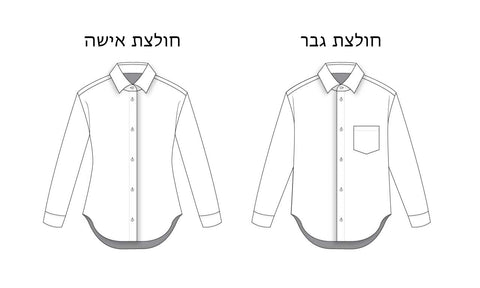
And what about the colors of the shirts? Men’s dress shirts could be found in a variety of colors and patterns, but the collar as well as the cuffs remained white. The phrase White Collar has become a term that represents not only the actual color of the collar, but also a symbol of social class and status. This is an informal term associated with middle-class people who worked in professional jobs that required academic education. These jobs included management professions, administration and office jobs, marketing and sales careers, and, of course, those who worked in law, accounting, architecture, and medicine. White-collared people were distinguished throughout history from Blue-collared ones, who worked in manual jobs; namely, “dirty” jobs that required physical effort. The Blue Collar status was considered as the proletariat, and the term itself became a nickname for the work shirt of the workers.
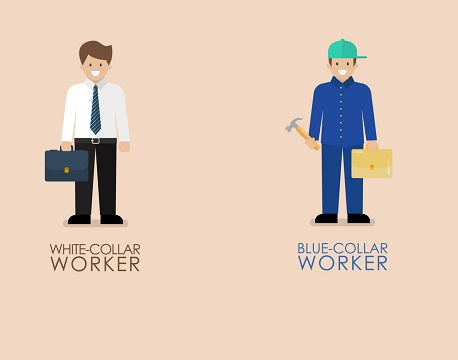
The shirt itself was sewn with a collar that was attached to it. Some people didn't wear collars at all (some of them couldn't even afford washing collars…). As for the buttons on the shirts, at the beginning, there were half-placket shirts, where the placket was sewn only half-way but eventually proved difficult to get in and out of, which led to the development of the buttoned shirt as we know it today. This is a shirt that is worn like a coat, and that is why it’s called a coat shirt. These shirts were easy to wear and take off.
They were longer than the ones we wear nowadays because they were used not only as shirts but also as underwear for men, who used to tuck them between their groins (in between their legs) as underpants, wearing pants on top of them. Another advantage of these long shirts was that they didn't come out of the pants while bending or sitting down. Later, even when underpants as we know them today were already invented, the length of the shirts remained the same and didn't change. 
The Development of Detachable Collars and Cuffs
A detachable collar is a shirt collar which is separated from the shirt, and fastened to it using studs. The collar is usually made of a different fabric than the shirt. It is almost always white, and can be startched to a hard cardboard-like consistency.
The detachable collar was invented by Hannah Montague in Troy, New York in 1827. Montague wished to wash her husband's shirt, but as only the collar was dirty, she had a brilliant idea: why not wash only the collar (which is the part of the shirt that always shows, even when wearing a jacket on top, and also the part that gets dirty more frequently than the other parts of the shirt)? She then cut off the collar and attached lengths of fabric tape so that they could be tied around the neck of the collarless shirt. This meant that the collar could be washed independently, saving both time and labor.
The Rev. Ebenezer Brown, a businessman from Montague’s town, proceeded to commercialize her idea. Since then, the manufacturing of detachable collars and associated shirts became a significant industry in the Town of Troy.
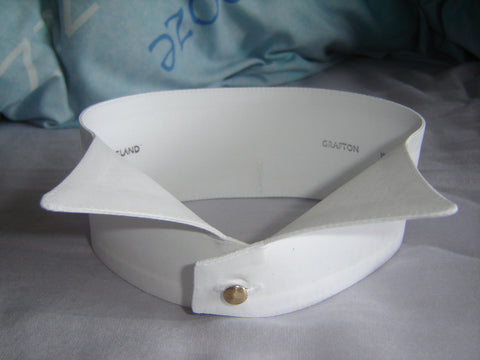
Afterwards, for a short period of time, other parts of the shirt became detachable, such as the cuffs and the front part of the shirt. These parts had to be starched and were therefore easier to starch when separated from the shirt. Also, it was cheaper to buy them separately than to buy the entire shirt, and as they used to get dirty more often than the entire shirt, it became easier to wash them separately. The front piece was called a dickie front, or a detachable bib. It looked more aesthetic as it didn't wrinkle easily because of the starching. Later, when people started to care more about comfort when dressing up, some parts of the shirt stopped being starched, but the stiff starched collar, along with the left and right cuffs, are the last remnants of this time period when shirts were stiffly starched.
The years 1890-1920 were the blooming period of the detachable collars. During this time period, various types of shirts emerged, but the shiny, pure, white shirt has remained a symbol of wealth and prosperity to this very day. This was in contrast with the striped shirt that could more easily hide stains that were not washed often. This can help us understand why, even today, a man or woman wearing an ironed, pure, white shirt, constitute a symbol of a high social status .
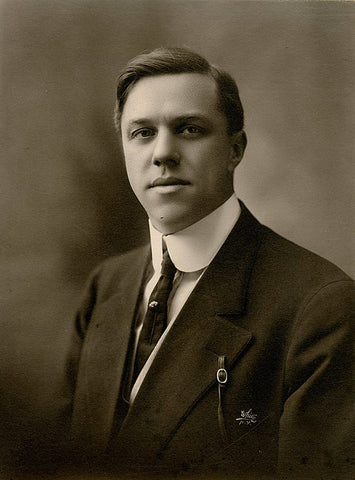
1910, a man wearing a detachable collar, USA
During this period, various types of collars were available, including soft collars, stiff paper ollars, and celluloid collars (stiffly starched collars that can be wiped clean instead of being traditionally washed).
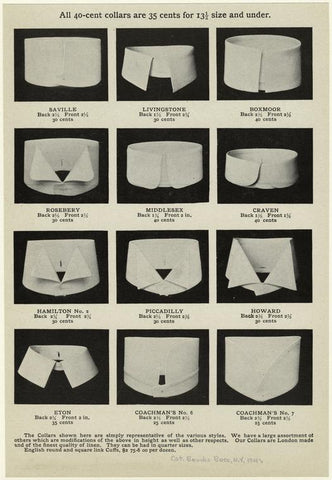
The collar was attached to the shirt using 3 collar studs: one (called a back stud) at the center of the back, which was shorter as it was intended to attach only two layers of fabric, and two (called front studs) at the front, which were longer and were intended to go through 4 layers of fabric.
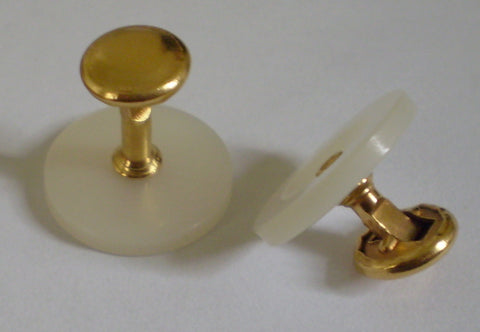
There was also a special appliance called a stud puller, which helped the collar stud to pass through all the layers of fabric. The shirt would be worn with the back stud connecting the collar to the shirt at the center of the back, and the tie would be placed under the collar for a turndown collar, then the shirt would be put on, after which the front stud would be pushed through the collar to fasten it.
Cuffs were attached with special 2-piece buttons called bachelor buttons, and there was also another accessory called cuff holder that used to hold the cuff and attach it to the sleeve.
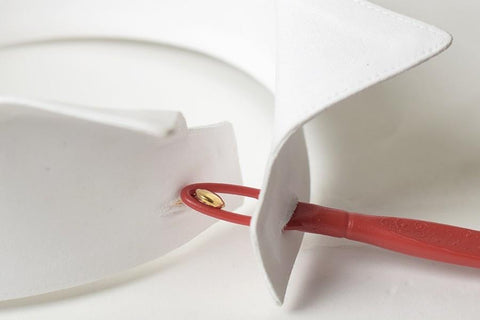
Who uses detachable collars? Detachable collars are commonly used to this very day in clerical collars (also known as roman collars). Nowadays, this clerical collar is often made from flexible plastic for ease of washing and is not always attached using studs in the traditional way.
Detachable collars are also used by barristers in the UK, Ireland, and Canada, many of whom wear a wing collar when in court to allow the use of bands (a form of formal neckwear, worn by some clergymen and lawyers, and with some forms of , which consists of two oblong pieces of cloth tied around the neck). On the way to and from court, a turndown collar and tie are worn.
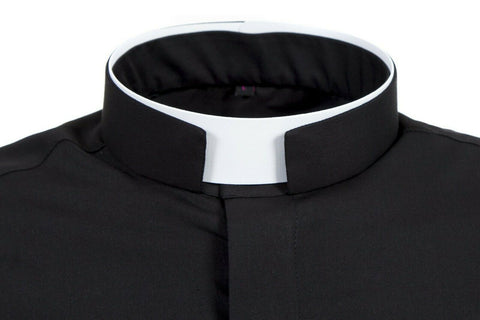
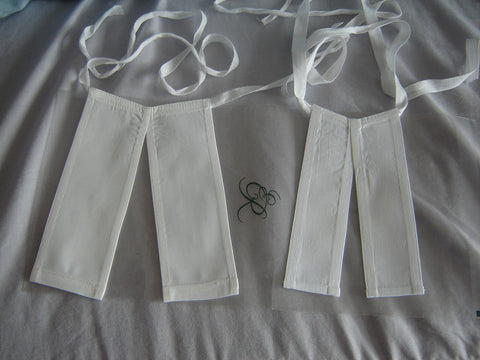
The popularity of the detachable collar dropped during the 1920s, with the rise of men's oxford shirt.
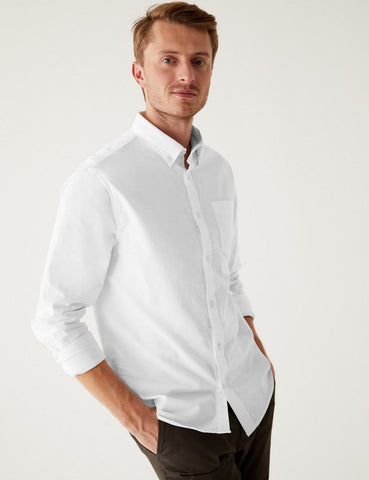
To sum up, the buttoned collared shirt as we know it today is a unique piece of clothing with a fascinating historical background. It’s amazing to see how a clothing item that has become so classic and "basic" in our wardrobe, constitutes a status symbol that existed hundreds of years ago, but is still relevant today.
So, next time you consider wearing a pure, ironed, white, collared shirt, think of the history that lies behind this unique piece of clothing, and take pride in it!







Leave a comment